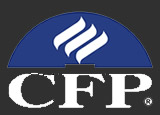This coming July it will be nine years since I retired from MSP and as I was telling someone the other day, I still have dreams about being a State Trooper. Sometimes they are so vivid I’ll wake up and look outside to make sure there’s not a roller parked in front of my house. I loved MSP and really enjoyed the people I worked with. It is not just a job; it’s a lifestyle. Anyway, these days I keep track of what’s going on in the Department through an awesome Facebook page called, “MSP, The People Behind The Shield.” I think a Sergeant named Doug Forrester started it up sometime around the beginning of the year. It was a great idea and if you’re not a member you should be.
The page has about 1,200 former or current MSP employees who follow it. Almost every day I stop by and check it out and I’ve been very impressed by the posts. We’ve had intelligent arguments from drug legalization, to the role and mission of the Department, to the sad state of the patrol vehicles. Anything under the sun can and does come up on that page. It’s usually very positive dialogue always with well-reasoned comments. The third floor would do well to monitor and participate on the page to get valuable feedback on the problems and concerns of our MSP family. Of course, I’m sure the brass are probably upset by some of the posts and most certainly there is someone somewhere at HQ trying to figure out how to squelch it. (Just like they tried with G-Rat at Westminster back in the day.) A few weeks ago a trooper posted a photograph of his odometer on his patrol car—it read 365,000 miles! They’re lucky the guy isn’t posting it in the front page of the Baltimore Sun. The page is not about complaining though—it’s about information and idea exchange among people with similar backgrounds and interests. It is healthy for the Department and they should embrace it, not fight it.
To get to my point, one of the questions that started some incredible feedback came just after an academy class graduated from Sykesville. It asked something like, if you had one piece of advice to give to a new recruit what would it be? The responses to that question were inspiring and thought provoking. Most were officer-survival related, some about family and co-workers. Many were about surviving in a highly politicized department. The post started me thinking about when I came on the job.
It was January of 1979 and I was just hired as a cadet in the Truck Weight Enforcement Division. I was slowly working my way through a pile of paperwork for Miss Zelda at the TWED office in Pikesville when a Sergeant walked in and said, “Cadet, first things first, join deferred comp!” I didn’t know what deferred comp was—heck, I didn’t even know three stripes made you a Sergeant but I did know that he outranked me—even Miss Zelda outranked me—and on that first day I was all about doing what I was told. So out of the $8,000 or so in annual salary I started setting aside a whopping $30 bucks a paycheck.
That Sergeant was Ken Harry and to this day I think it was probably the best single piece of personal advice I ever received. Over the next 26 years each time I got a pay-scale-step—we actually got them in those days—or a promotion, I increased my deferred comp deposit. When I retired it was, and still is, a nice little retirement account. So for you new people coming on to the Department, or if you’ve never joined to begin with, let me point out some of the exciting features and characteristics of what we call deferred compensation. (Don’t toss the magazine–stick with me, it’s only a few more paragraphs.)
Deferred Comp in MSP is actually what the IRS calls a 457(b) plan[1]. The 457(b) is only offered to government and non-profit employees. It allows employees to take money before taxes are paid and set it aside in an investment account (with MSP it must go to Nationwide Retirement Solutions) where it grows (or shrinks) free of taxation. Employees are allowed to defer up to $17,500[2] of income per year into a 457(b). The money is available to the employee when they leave the agency free of any penalties. This is a key difference between the 457(b) and the 401(k) plan—you don’t have to wait until 59.5 years of age to access the plan. You can take money out of a 457(b) plan without penalty once you leave the job—no matter how old you are. Income taxes are due once you take it out of the 457(b) but there’s no 10% penalty. (This does not include DROP money—if you leave the job before age 50 then all DROP money must stay in a qualified account until age 59.5 or else the 10% penalty applies.)
Another benefit of the 457(b) over the 401(k) is that you can contribute the maximum to both plans. So you can save $17,500 in a 457(b) and another $17,500 into a 401(k) effectively setting aside up to $35,000 of current income until later. By the way, it is usually not advisable to start the 401(k) until you max-out the 457(b).
Deferring income and its taxation means that you determine when to withdraw the money and pay income taxes on it. For example, by setting aside $100 now—it only costs you about $70 to $75 in take-home-pay since the rest would be withheld for various taxes. You can then take that $100 out at some future point when your income is liable to be less and you’re in a lower tax bracket. You might even move out of a high tax State, such as Maryland, which would take somewhere in the neighborhood of $6 or $7 bucks depending on which county you live to an income-tax-free state and skip that tax altogether.
There is a good chance that after retirement your federal tax bracket is lower due to reduced income (you’re not going to be working NSA overtime forever) and/or maybe you are planning on moving to one of the seven states[3] where they don’t tax income locally. Now that $100 you put away that was only really worth $75 is maybe worth $85. And that’s not counting any growth you picked up on the investments along the way.
Finally, we all know what an 18 year-old Marty Knight would’ve done with that deferred income—he probably would’ve spent it on junk. Stuff that would’ve been tossed in the trash long ago. (In all likelihood I would have bought more softball bats.) Now, I have the money safely invested in the market waiting till a time when I might really need it. And it was all because of a simple piece of advice by then Sergeant Ken Harry. Thanks Ken.
Marty Knight, MBA, CFP® is a retired Captain from the Maryland State Police and is currently a Financial Advisor with Chesapeake Investment Advisors Inc. Securities and Advisory services are offered through Geneos Wealth Management, Inc. Member FINRA/SIPC. He can be reached at 800-994-0221 or emailed at mknight@chesadvisors.com
[1] 457(b) is the section number in the Internal Revenue Code.
[2] $17,500 for CY 2014. If over 50 employee is allowed an additional $5,500 per year as a “catch-up.”
[3] Alaska, Florida, Nevada, South Dakota, Texas, Washington or Wyoming.


